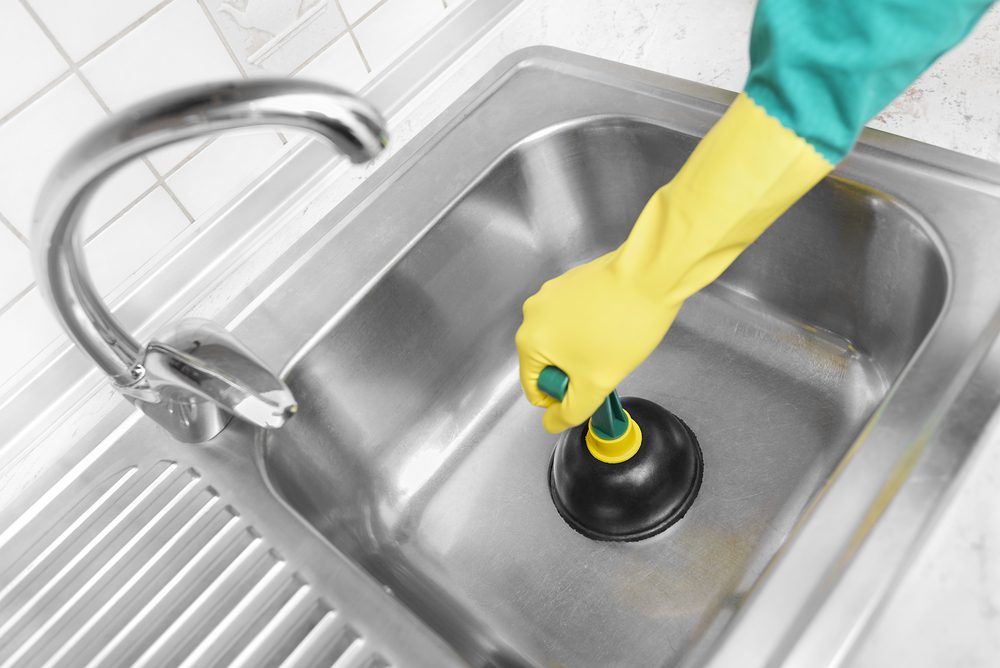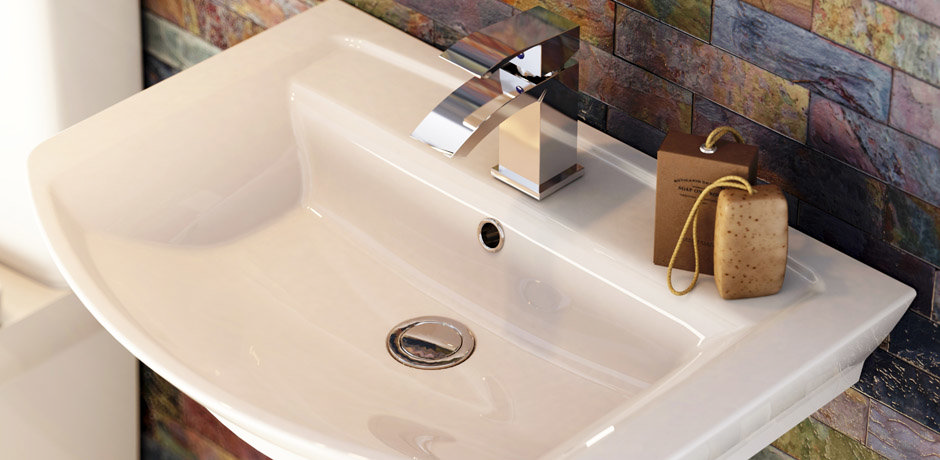Essential Steps To Repair A Slow-Draining Sink
Essential Steps To Repair A Slow-Draining Sink
Blog Article
Just how do you feel with regards to How to Fix a Slow Draining Sink?

Introduction
We've all been there: You're cleaning your teeth or washing your hands, and you notice the water pooling in the sink. As opposed to quickly swirling away, it lingers, transforming your once-refreshing early morning regimen right into a small swamp scene. A slow-draining sink isn't simply bothersome; it's usually an indicator of bigger plumbing issues lurking beneath the surface area. Fortunately is that the majority of slow-draining sinks can be taken care of with a little knowledge, a few basic devices, and some perseverance. Prepared to tackle this project head-on? Allow's roll up our sleeves and dive right in.
Understanding the Sources Of a Slow-Draining Sink
Before you start poking around in your pipelines, it helps to understand what may be causing the stagnation. Comprehending the root cause makes it easier to choose the best repair.
Usual Culprits Behind Slow Drain
So, what's obstructing things up? Normally, it's a mix of daily particles-- think hair, soap residue, tooth paste deposit, and remaining food particles. With time, these little bits accumulate and cling to the pipe wall surfaces, progressively narrowing the passage and making it harder for water to go through. Sometimes, mineral deposits from tough water can additionally include in the crud, producing the excellent tornado for persistent obstructions.
When is it Time to Do Something About It?
If you observe the water draining pipes slower than normal, it's a great idea to interfere faster instead of later on. Waiting also long might cause complete clogs, unpleasant smells, or perhaps pipeline damages. If the water takes more than a few seconds to remove after shutting off the faucet, consider it a warning and prepare yourself to place on your DIY hat.
Tools and Products You'll Need
The right devices make all the difference. The good news is, you won't require a totally stocked plumbing professional's van to do the job.
Important Devices for Do It Yourself Repairs
A plunger is your best beginning point. A small, sink-sized bettor creates suction that can dislodge small clogs. For more relentless blockages, a drain snake (in some cases called a plumbing technician's auger) functions marvels. A pair of handwear covers, a flashlight, and possibly a pair of protective safety glasses are likewise helpful.
Suggested Cleaning Solutions
Moderate meal soap and warm water can assist break down greasy accumulation. A mixture of baking soda and vinegar is a tried and true home remedy, and enzymatic cleansers use an even more environmentally friendly strategy. Maintain chemical drain cleaners as a last hope, as they can be extreme on your pipelines.
Safety First: Precautions and Prep work
Prior to you launch into unclogging mode, think of safety. You're dealing with possibly filthy water and particles, so slip on a set of handwear covers. If you're making use of chemical cleansers, guarantee the area is well-ventilated and comply with the directions on the label.
Safety Gear and Work Space Configuration
Lay down some old towels or rags around the sink area to catch splashes. Clear away any products that could enter your way, like soap dispensers or toothbrush owners. Make certain you have excellent illumination-- grab a flashlight if required.
Step-by-Step Guide to Taking Care Of a Slow-Draining Sink
Currently, allow's get involved in the nitty-gritty. This detailed process will certainly direct you with straightforward methods to recover your sink's drainage.
Step 1: Eliminate and Clean the Stopper
Usually, the stopper (that tiny plug you push down to block water) is the initial wrongdoer. Remove it carefully and clean off any hair or gunk entraped around its base. Rinse it thoroughly prior to putting it back in position.
Step 2: Use a Bettor to Remove Particles
Got that bettor prepared? Position it over the drain and offer it a couple of company pumps. The concept is to produce suction that can loosen any type of clog. If you see bits of debris drifting up, you're on the ideal track.
Action 3: Attempt a Drainpipe Serpent or Cord Hanger
If the plunger doesn't do the trick, it's time to draw out the drain snake. Carefully feed it into the drain and twist as you go. You may really feel some resistance-- that's most likely the blockage. Keep turning and drawing till you eliminate the blockage. If you do not have a drain serpent, a corrected the alignment of cord wall mount can operate in a pinch.
Step 4: Apply a Do It Yourself Drainpipe Cleanser
A natural cleaner made from baking soft drink and vinegar can break down residual crud. Put half a cup of cooking soda into the drain, complied with by half a mug of vinegar. Allow it fizz for about 15 mins, after that flush with warm water. This chemical reaction typically does wonders for small blockages.
Tip 5: Rebuild and Evaluate the Sink
Placed every little thing back together and run the faucet. Does the water now swirl down the tubes at a reputable speed? If yes, offer yourself a pat on the back. If not, don't misery-- there are still a few more dress up your sleeve.
Different Approaches for Stubborn Clogs
Not all obstructions are created equivalent. If your sink still refuses to work together, consider these alternate options.
Sodium Bicarbonate and Vinegar Technique
We currently discussed this, however it deserves keeping in mind once again. This mild, environmentally friendly approach is safer than chemical cleansers and typically rather efficient.
Enzymatic Drain Cleaners
Enzyme-based cleaners use natural bacteria to absorb raw material. They're an exceptional selection if you're aiming to stay clear of rough chemicals. Simply bear in mind, they may take a bit longer to function their magic.
Chemical Drain Cleansers: Benefits And Drawbacks
Chemical cleansers can blow up via hard clogs quick, yet they're not without drawbacks. They can create warmth and fumes, damages pipelines if used excessively, and present environmental risks. Utilize them sparingly, and constantly adhere to the instructions very carefully.
Preventive Measures to Maintain Your Sink Flowing
Prevention is the most effective remedy. By taking on a couple of easy habits, you can maintain your sink from decreasing in the first place.
Routine Cleaning Up Habits
Clean down the sink basin and component area routinely. Remove hair or food bits prior to they have a possibility to wash down the drain.
Avoiding Hazardous Compounds Down The Tubes
Reconsider prior to discarding coffee premises, oil, or fibrous veggie scraps down the sink. These perpetrators cling to pipe walls, producing obstructions with time.
Routine Maintenance Checks
Schedule a quick month-to-month examination. Run hot water with the sink for a couple of minutes, paying attention to the circulation. If it seems slow-moving, act quickly before it ends up being a full-on clog.
When to Call a Professional Plumber
Often, no matter exactly how tough you attempt, that obstruct just will not move. That's when it's time to bring in the pros.
Indications That Show an Extra Severe Problem
If your sink drains pipes gradually despite multiple attempts, or if you observe water supporting in various other fixtures (like your shower or bathroom), you might have an extra serious pipes concern prowling much deeper in the system.
Stabilizing DIY Efforts with Expert Aid
While do it yourself can save you cash and supply a sense of success, there's no shame in calling a professional. A specialist plumber can analyze your entire pipes configuration, guaranteeing there's no underlying damages or long-term trouble that can cost you more in the future.
Contrasting Prices and Long-Term Solutions
Prior to deciding, consider the big picture. A cheap, quick fix could resolve the trouble temporarily, but buying an extra permanent service might conserve you money and stress and anxiety in the long run.
Considering the Expenditures of DIY vs. Professional Solutions
Do it yourself repairs usually set you back little bit more than the price of a plunger or a bottle of cooking soft drink. Specialist solutions, on the other hand, featured a cost yet may prevent repeated problems and costly repair work later.
Buying Quality Fixtures and Upgrades
If your sink's layout contributes to frequent clogs, it may be worth upgrading to higher-quality components or altering the pipes layout. Consider this an investment in your home's functionality and comfort.
Final thought
A slow-draining sink can feel like a minor irritability, yet it's commonly an indication that your pipes requires a little tender loving care. By recognizing the root causes, using the right tools and methods, and devoting to easy safety nets, you can keep your sink streaming openly. And when all else stops working, never ever think twice to call in a professional-- your home's plumbing deserves the investment in care and upkeep.
Three Common Ways to Fix a Slow Drain
Baking Soda Method
Boil a full pot of water. Measure out cup of baking soda and pour it down the drain. Then take cup of the magical cleansing substance known as white vinegar and drop that down there too. Allow the mixture to fizz in the drain for five minutes as the vinegar and baking soda combine. Now dump in that whole pot of boiling water. This combination of cleaning substances should clear out anything that is causing your sink to drain slowly. If it doesn t...
Zip-It
If the baking soda method doesn t clear out your drain, it may be because a significant amount of hair and/or other debris has collected there and you need to remove it. Purchase a Zip-It tool at any home improvement or hardware store and insert it into your drain. It will catch any collected hair or debris that s blocking the flow of water. Pull it out. If it s got a big clump of hair, etc. on the end, you ve probably got your culprit.
Drain Cleaner
If these methods don t work, there is the standard drain cleaner that you can also buy in a hardware store or even your local grocery store. It s better if you can use a household solution, but these drain cleaners often work in a pinch. They re very simple to use. You generally just dump them in your drain and wait. If even this method is not effective, it may be time to call the plumber.
https://www.mrrooter.com/oneida/about-us/blog/2017/july/three-common-ways-to-fix-a-slow-drain/

I recently found that entry on Three Common Ways to Fix a Slow Drain while doing a lookup on the search engines. Remember to take a moment to distribute this entry if you enjoyed it. I cherish reading our article about Solved! How to Fix a Slow Sink Drain.
Book Appointment Report this page